Introduction
In the realm of culinary arts, traditional Asian dishes often rely heavily on specific ingredients to achieve their signature flavors and textures. Among these, glutinous rice flour and adzuki beans stand out as essential components in numerous desserts and savory dishes. From mochi and daifuku to red bean paste used in various confections, these ingredients are not only delicious but also carry cultural significance. This comprehensive guide aims to teach you how to make glutinous rice flour from scratch and cook adzuki beans perfectly, ensuring you can recreate authentic Asian dishes at home.
Section 1: Understanding Glutinous Rice Flour
1 What is Glutinous Rice Flour?
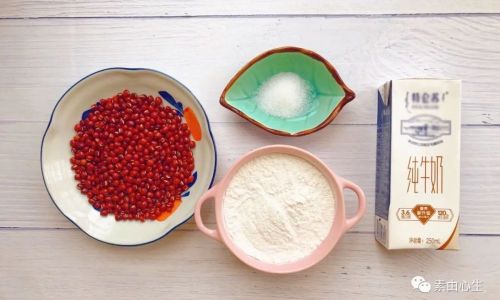
Glutinous rice flour, also known as sweet rice flour or mochiko in Japanese, is derived from a type of rice called glutinous rice (Oryza sativa var. glutinosa). Despite its name, glutinous rice does not contain gluten, which is a protein found in wheat and other grains. Instead, it gets its sticky texture from a high amylopectin content, a type of starch that forms a gel when cooked.
2 Why Use Glutinous Rice Flour?
The unique properties of glutinous rice flour make it ideal for creating moist, sticky, and chewy textures in desserts. It is a staple in Japanese mochi, Chinese tangyuan, and Korean ddeokbokki, among others. Its ability to form a cohesive dough that holds together well when steamed or cooked makes it perfect for shaping into various forms and filling with sweet or savory ingredients.
3 Making Glutinous Rice Flour at Home
While you can purchase glutinous rice flour at most Asian grocery stores or well-stocked supermarkets, making it yourself allows for freshness and customization. Here’s how:
Materials Needed:
- 1 cup of glutinous rice (soaked overnight)
- A food processor or blender
- A fine-mesh sieve
- Airtight container for storage
Steps:
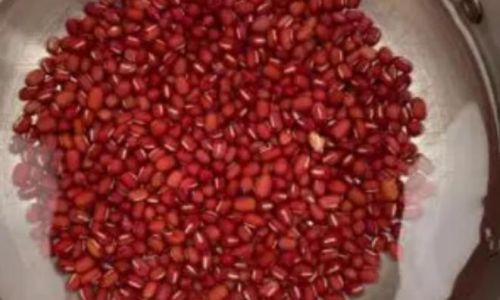
-
Soaking the Rice: Begin by soaking the glutinous rice in water overnight. This process helps soften the grains and makes grinding them into a fine powder easier.
-
Draining and Drying: The next day, drain the rice thoroughly and let it air-dry on a clean kitchen towel for a couple of hours. Alternatively, you can pat it dry with paper towels to speed up the process.
-
Grinding the Rice: Once dry, transfer the rice to a food processor or blender. Blend on high speed until you achieve a fine, powdery consistency. This may take several minutes, depending on the power of your machine. Pause occasionally to scrape down the sides and ensure even grinding.
-
Sifting: Pass the ground rice through a fine-mesh sieve to remove any large particles or unground grains. This step is crucial for achieving a smooth texture in your final flour.
-
Storing: Transfer the sifted glutinous rice flour to an airtight container and store it in a cool, dry place. Properly stored, homemade glutinous rice flour can last for several months.
Section 2: Cooking Adzuki Beans
1 What are Adzuki Beans?
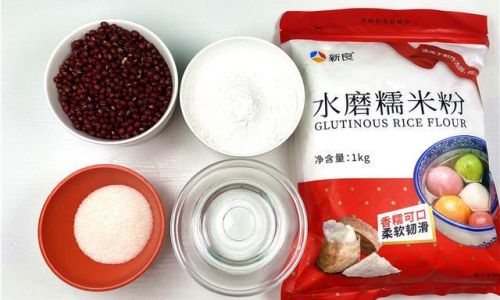
Adzuki beans (Vigna angularis), also known as red beans or aduki beans, are small, red legumes native to East Asia. They have a nutty flavor and a slightly sweet taste, making them a popular choice for desserts and sweet dishes. Adzuki beans are rich in nutrients, including fiber, protein, and various vitamins and minerals.
2 Culinary Uses of Adzuki Beans
In traditional Asian cuisine, adzuki beans are used in a variety of dishes. They are often cooked into sweetened pastes used as fillings for mochi, anko (Japanese red bean paste), and Chinese red bean buns. They can also be boiled and served as a side dish, added to rice porridge, or used in savory dishes like Japanese adzuki bean rice (azuki meshi).
3 Preparing Adzuki Beans for Cooking
Before cooking adzuki beans, it’s important to prepare them properly to ensure they cook evenly and retain their flavor. Here’s how:
Materials Needed:
- 1 cup of dried adzuki beans
- A large bowl
- Water
- A colander or strainer
- A large pot with lid
- Sugar or honey (optional, for sweetened beans)
Steps:
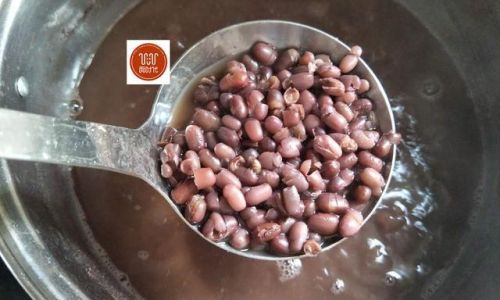
-
Sorting and Rinsing: Begin by sorting through the beans to remove any stones, debris, or discolored beans. Rinse the beans thoroughly under cold running water.
-
Soaking: Place the rinsed beans in a large bowl and cover them with at least 2 inches of water. Soak them overnight or for at least 8 hours. Soaking helps soften the beans and reduces cooking time.
-
Draining: The next day, drain the beans using a colander or strainer. Rinse them again under cold water to remove any surface starch, which can cause the beans to become too sticky during cooking.
-
Cooking: Place the soaked and drained beans in a large pot. Add enough water to cover the beans by about 1 inch. Bring the water to a boil over medium-high heat, then reduce the heat to low, cover the pot, and let the beans simmer gently.
-
Checking for Doneness: Cooking time can vary depending on the freshness and size of the beans, but it typically takes around 1 to 1.5 hours for the beans to become tender. Check the beans periodically, stirring gently to prevent sticking. If the water level drops too low, add more boiling water as needed.
-
Sweetening (Optional): If you plan to use the beans for sweet dishes, you can add sugar or honey during the final stages of cooking. Start with a small amount (about 1/4 cup for 1 cup of beans) and taste as you go, adding more if desired.
-
Draining and Cooling: Once the beans are tender, turn off the heat and let them sit in the cooking liquid for about 10 minutes to absorb more flavor. Drain the beans using a colander and let them cool to room temperature before using.
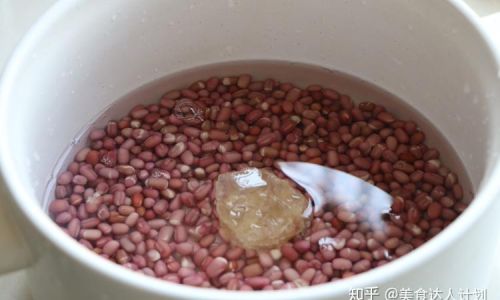
Section 3: Tips and Tricks for Perfect Results
1 Making Glutinous Rice Flour:
- Rice Quality: Use high-quality glutinous rice for the best results. Older rice may not grind as finely.
- Storage: Keep homemade glutinous rice flour in an airtight container to prevent it from absorbing moisture and becoming clumpy.
- Substitutions: If you can’t find glutinous rice, you can sometimes substitute regular sticky rice (sticky rice that is cooked and then dried and pounded into a paste), but the texture will differ slightly.
2 Cooking Adzuki Beans:
- Soaking Time: Soaking the beans overnight is ideal, but if you’re in a rush, you can use the quick-soak method: bring the beans and water to a boil, then remove from heat, cover, and let sit for 1 hour before draining and rinsing.
- Water Level: Always keep an eye on the water level while cooking the beans. If it drops too low, the beans may burn on the bottom of the pot.
- Flavor Enhancements: For extra flavor, you can add a piece of kombu (kelp) or a strip of orange peel to the cooking water. Remove these before draining the beans.
Conclusion
Mastering the art of making glutinous rice flour and cooking adzuki beans opens up a world of culinary possibilities. From traditional Japanese mochi to innovative fusion desserts, these ingredients are versatile and delicious. By following the steps outlined in this guide, you can ensure perfect results every time, bringing the authentic flavors of Asia into your kitchen. Happy cooking!

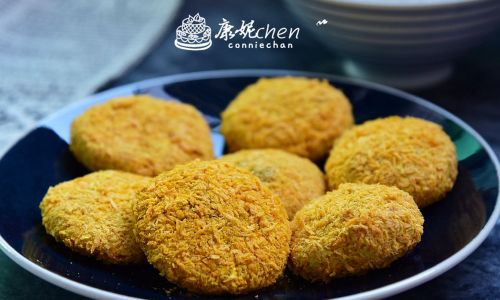




0 comments